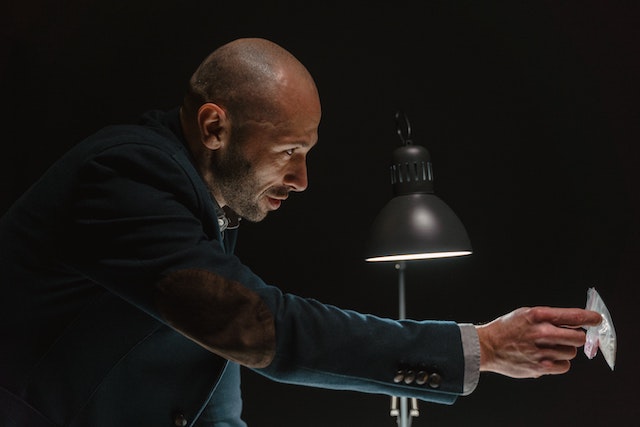Your Detective’s Inside Story: To Character Arc or Not

While many genres work best when the protagonist has an emotional arc, a mystery novel does not require an arc for the protagonist detective. In fact, in most detective mysteries, the protagonist has what is called a flat arc.
Recently a new author in an online writing group was struggling with creating her detective’s emotional arc. There were lots of replies to her post giving all kinds of suggestions for creating an emotional arc.
Generic writing advice does not always apply to the mystery genre.
Emotional Arc versus Flat?
An emotional arc involves a character’s inner journey from not knowing they have a problem, to recognizing the problem, to avoiding making a change, to making a change.
But in a mystery, a detective doesn’t necessarily need to experience emotional growth, overcome their shortcomings, or make a life change.
The mystery detective’s inner emotions play second place to their search for the truth. The truth is the discovery of the villain. While that discovery is the external goal of the story, the detective often has an internal goal tied to the same discovery.
A flat “arc” character essentially arrives at the story’s end with the same emotional construct they had at the beginning of the story. Flat arc characters are common in mysteries and thrillers.
One reason for the popularity of a mystery series is the detective’s whole cloth. Readers like to follow the detective with all their foibles as they work to solve the case.
Emotional Challenge versus Emotional Change
A reader wants to experience emotion. If a character doesn’t experience emotion, then the reader won’t either. While your detective may not experience an inner journey to a new recognition, an emotional connection with the reader is essential.
You can provide your reader with a spectrum of emotions as your detective hunts for the truth—pride, fear, frustration, love, anger, and relief.
Rather than one big character arc, mystery writers reveal emotions through character detail and scene construction as moments arise in the story.
Character Emotions Create Reader Engagement
Whether a protagonist has a character arc or has the same emotional makeup at the beginning and end, their emotional experience connects the reader to the character.
You can create plenty of emotional engagement for your reader with your mystery protagonist. Every scene is your opportunity for an emotional response, big or small.
Build Emotional Engagement Scene by Scene
While your detective may not have a big emotional arc, each scene is an opportunity to highlight emotions and connect with the reader. Since you have multiple scenes in your story, you have ample opportunity to work with emotional change.
Here’s a quick checklist to track emotional change in your scene.
- Entering emotional state of the point-of-view character
- Character objective. What do they want?
- Conflict. What impedes them from what they want?
- Motive for antagonism. Some understanding of the other character’s motivation.
- Character’s worldview. What belief system is he operating in?
- Tactic. What actions the character takes in the scene to achieve their objective. (Remember dialogue is action.)
- Turn. Does the character get what they want in the scene? What comes out of the conflict? What causes their emotions to change?
- Objective achieved. Yes or no?
- Exiting emotional state. If not, the opposite of the entering emotional state, it must be different.
You’ll build an emotional arc into every scene. As your story progresses, the emotional quotient of the scene relates to the rising stakes. And that’s what you want in your mystery, rising emotional involvement for the reader.
Each scene is a separate story with a beginning, middle, and end. In the middle the scene character encounters conflict. By the end of the scene, the conflict has either thwarted their path or led them to success. The scene has an arc where tension builds. Without conflict and tension, your scene will feel flat and won’t move the character or your story forward.
Tell the Inside Story
As you build the plot to create your mystery, use each scene to show your detective’s emotional state. And show the emotional change in each scene. Of course, some scenes will be more dramatic than others, but if your protagonist detective experiences an emotional change in each scene, your reader will connect, love your detective, and keep reading.
Photo by Mohamad Khosravi on Unsplash






